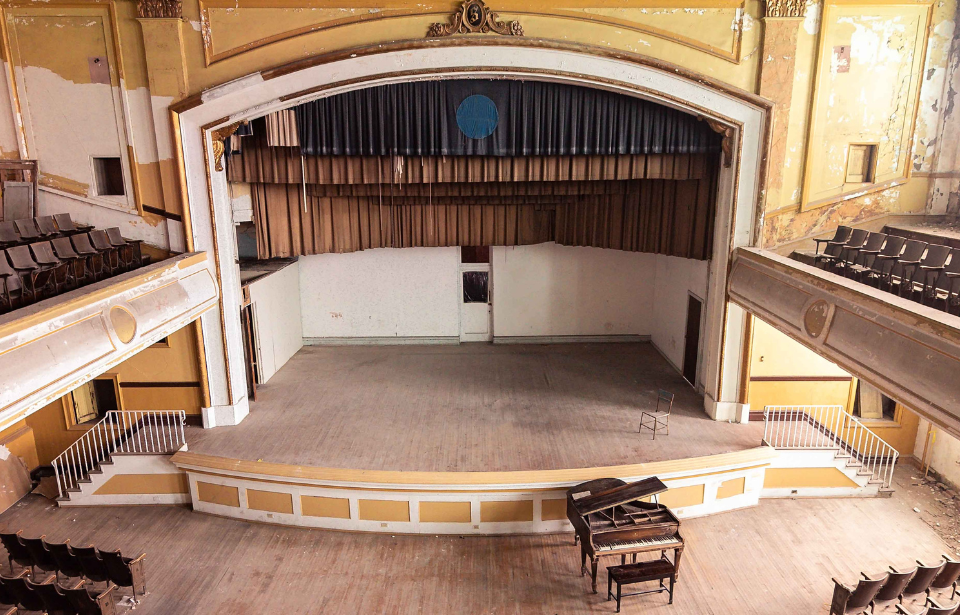Thank you to Dave Bentley of The Dying Light for supplying images for this article.
Pennsylvania is home to thousands of coal mines. The industry helped build the state, with the majority of residents involved in mining in some form or another. Many of them have since shuttered, largely due to the rising cost of burning the rock, and, today, just 40 remain active.
One town to benefit from the mining boom of the 19th and 20th centuries is Shenandoah, located in Schuylkill County. Anthracite coal was discovered in the area around the time of the American Civil War, leading to a spike in the local population. This meant there was a need for new educational institutions, such as the J.W. Cooper School.
From a makeshift morgue to a public high school
Shenandoah experienced a population boom following the opening of the area’s coal mines, with the majority of new residents being of Lithuanian descent. This influx was so great that the town was the most densely populated in the United States during the 1920s and ’30s.
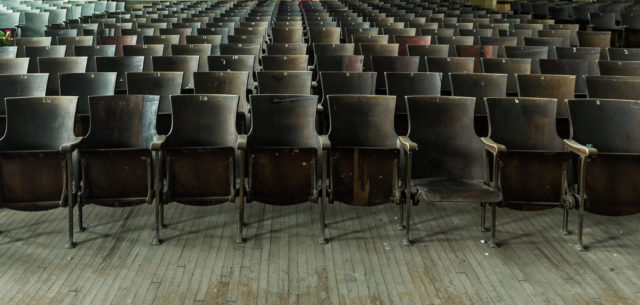
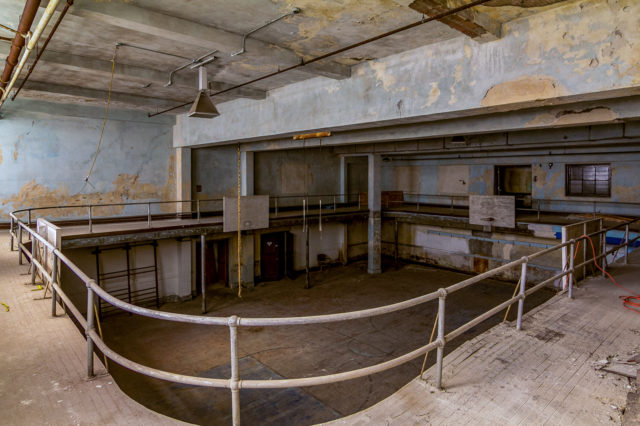
To accommodate the growing population and the families that made up a large portion of it, a four-floor, 45,000-square-feet high school was constructed in the center of town. Built out of a steel superstructure and consisting of brick and sandstone, the school was intended to open in 1918. However, the Spanish Flu pandemic forced officials to turn the building into a temporary hospital and morgue.
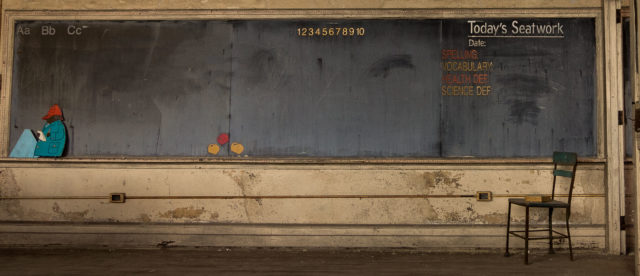
The school was officially dedicated in May 1919 as the “new” Shenandoah High School (its name was later changed to the J.W. Cooper School, after Shenandoah’s long-term school supervisor). Very little is known about its operations as an education facility, other than one of its most notable students was Jerry Wolman, the part-owner of the Philadelphia Eagles and Philadelphia Flyers.
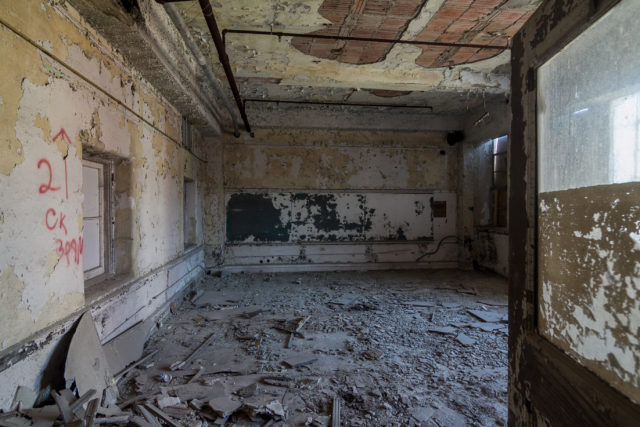
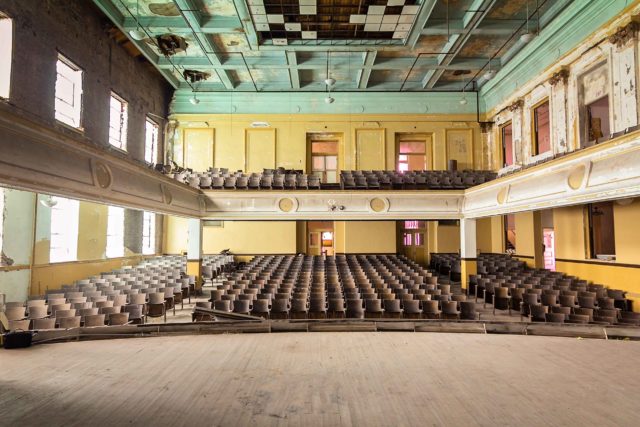
In spring 1981, the J.W. Cooper School was turned into an elementary school, which operated until 1994. From then until 2009, the building was owned by a number of individuals, the majority of whom didn’t take the necessary steps to preserve it. Many of the original decorations were sold for scrap, and one previous owner removed much of the school’s stained glass, plumbing and brass railings.
Restoration of the J.W. Cooper School
In the late 2000s, Shenandoah’s town council was faced with a dilemma. The then-owner of the J.W. Cooper School wasn’t paying his taxes, yet the town didn’t have the necessary funds to handle the building’s upkeep.
That’s when local jewelry store owner Kent Steinmetz stepped in to give the property a new lease on life. He envisioned turning the school into the J.W. Cooper Community Center, complete with a gymnasium, food bank, storefronts, a theater and office space for local businesses. He also aimed to make it more accessible.
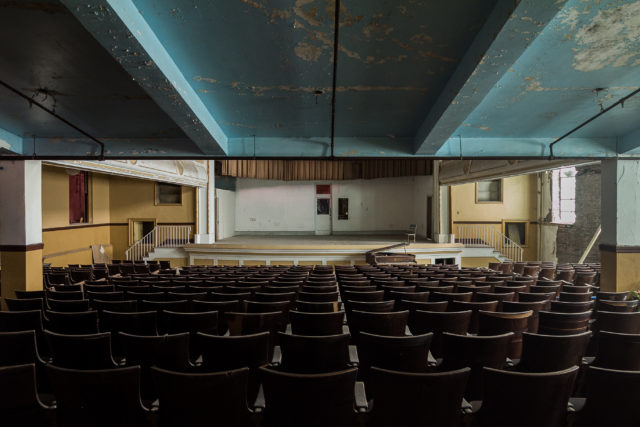
The restoration is still underway, as it partially relies on public donations and funding. That being said, Steinmetz has made decent progress in turning his dream into a reality. He’s replaced the roof and broken windows, as well as the electricity and plumbing. He also removed the tons of trash that had built up within the school’s interior, including just eight tons from the gymnasium alone.
The J.W. Cooper School’s design is both elegant and practical
For a former school building, the J.W. Cooper School features a design that’s both conducive to learning and a history lesson in 20th-century architecture. The remaining lights hanging from the ceiling over the 800-seat theater feature the original milk glass, with the room itself still in relatively good shape. The old stage curtains are still hanging, with an “S” written in script above.
The theater is surrounded by a number of classrooms, some of which show their age and disuse. There are also rooms containing extra desks, school books and an array of theater props, and the gymnasium still features its original wooden floor.
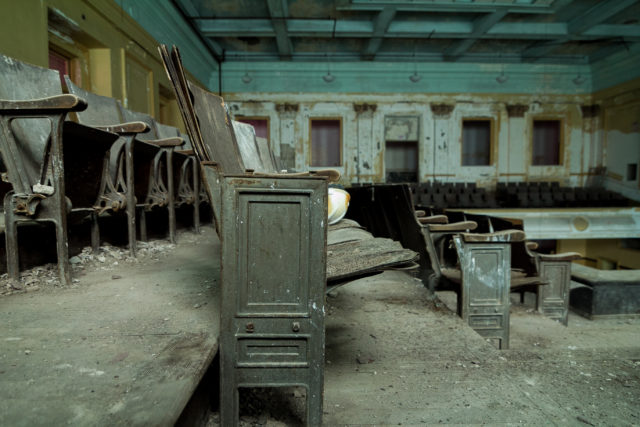
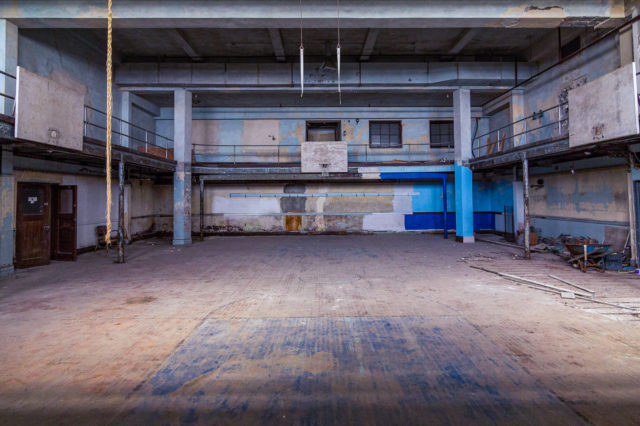
More from us: Island of the Dolls: A Macabre Tourist Attraction Steeped In Legend
While those features alone are enough to awe history and architectural buffs alike, what’s most interesting is the pool, which is located in the basement. The second oldest in Pennsylvania and the oldest to still remain in a school, the feature was once filled with piles of trash. Following Steinmetz’s efforts, it’s now only partially filled with dirt, a vast improvement.
